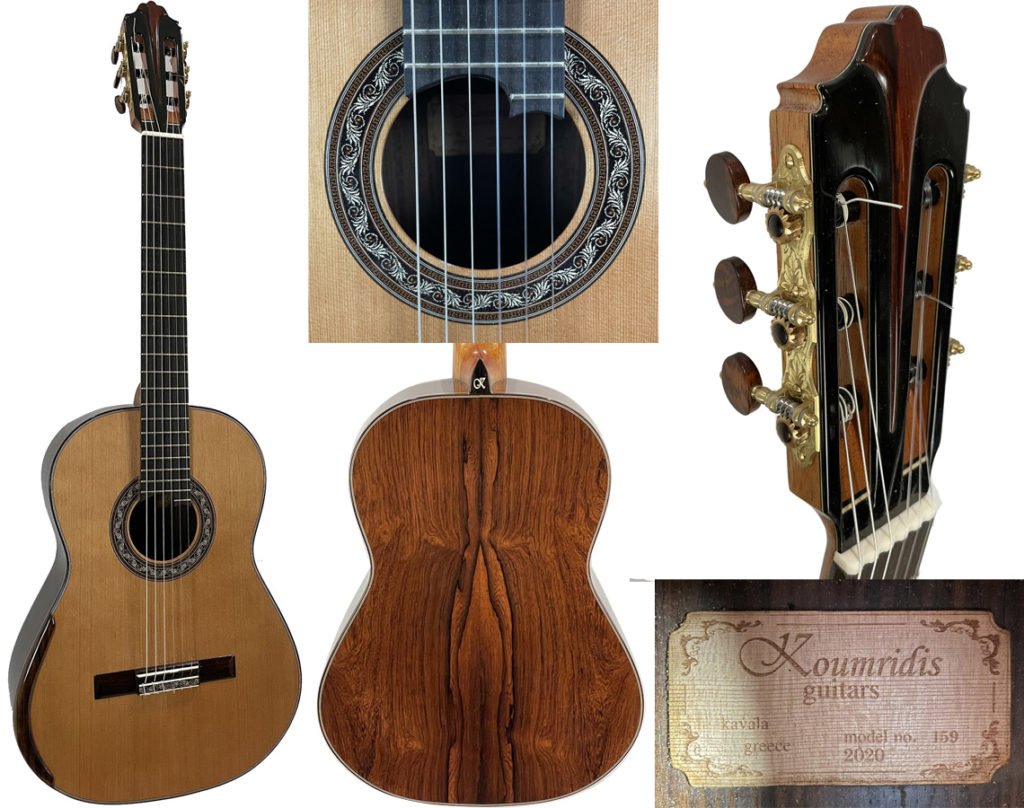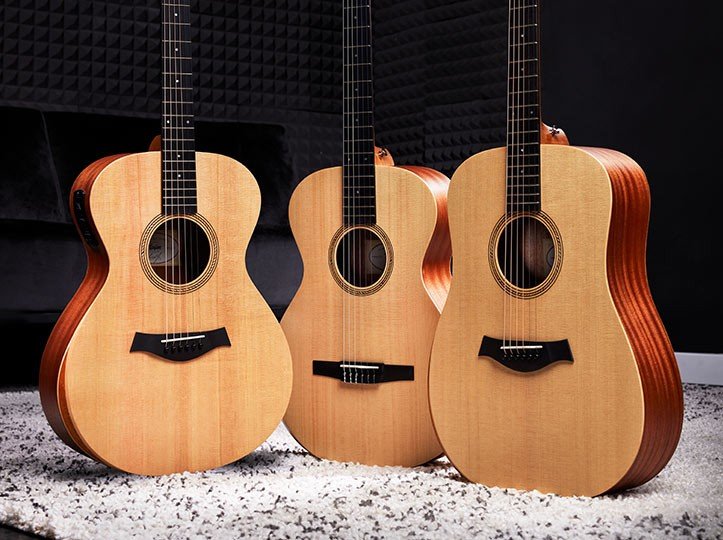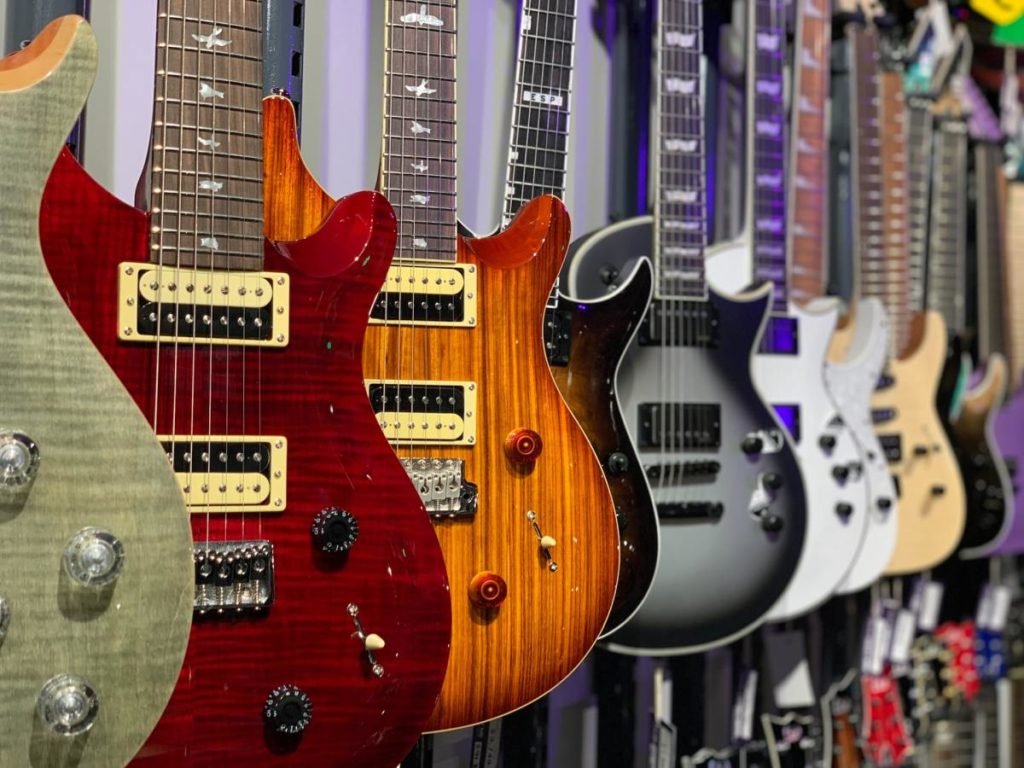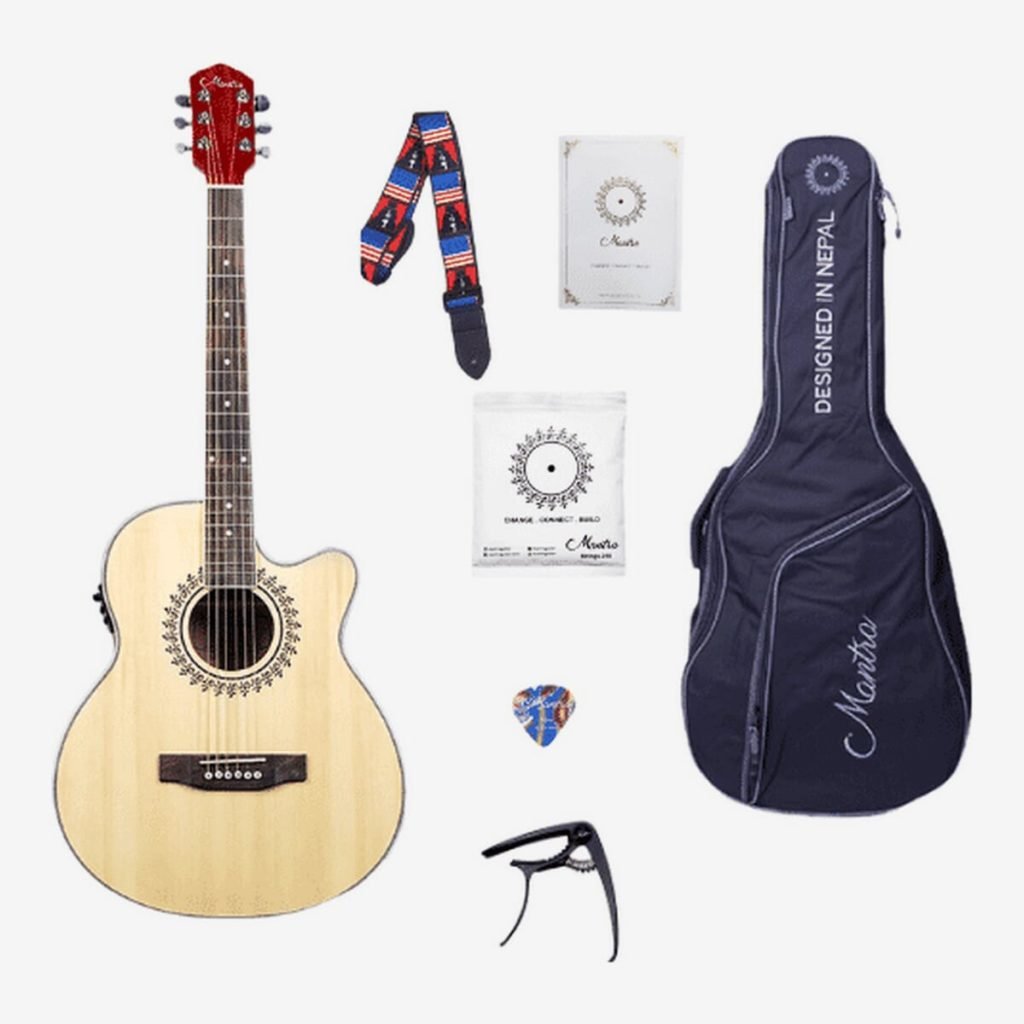When it comes to buying a guitar it takes a lot of consideration, and when it’s your first time buying one, you need to put in some extra effort to get the right one.
So, what must you look for when you are getting your firstWh-ever guitar? Size? Looks? Type? Seems confusing, right? It could be a little intimidating but with the right guidance, you can get just the right one for you.
Here are some of the few things that must be considered while buying a guitar.
Choose the right guitar for beginners
Buying your first-ever guitar? Here are some things that you must look for while getting your guitar.
There are 3 basic types of guitar. Classical, Acoustic, and Electric. Generally, these are the types of guitars that you would find in the market. Let us know further about what type of guitars are these and why you should have little knowledge of them before getting your first ever guitars.
Classical Guitars

The classical guitar, also known as the nylon-string guitar or the Spanish guitar is a member of the guitar family used in classical music and other styles.
The evolution of the classical guitars and their repertoire spans more than four centuries and has a history that was shaped by the contributions from earlier instruments, such as the lute, the vihuela, and the baroque guitar.
Often smaller than a Dreadnought guitar, the classical guitar has nylon strings and many different musical styles can be played on it. From folk to flamenco, even classical-style music can be played on these guitars.
The top plate of a classical guitar is constructed of spruce or western red cedar, which produces a clear and tight sound when used on a guitar.
The arrangements on these guitars consist fully of fingerstyle picking while in a seated position with one leg raised, allowing the instrument to rest on the raised leg.
The thumb traditionally plucks the bass – or root note – whereas the fingers ring the melody and its accompanying parts. Often classical guitar technique involves the use of the nails of the right hand to pluck the notes.
Acoustic Guitars

Acoustic guitars are one of the most popular types of musical instruments that generate sound from the strings vibrating over a resonant hollow chamber, allowing for a relatively loud sound without amplification.
The strings are typically played with fingertips. When the string is plucked, its vibration is transmitted from the bridge, resonating throughout the top of the guitar. Since the vibration is also transmitted to the side and back of the instrument, it resonated through the air in the entire body.
The body of an acoustic guitar is generally comprised of wood, often spruce or cedar, and has a hollow body, making them lighter than the other guitars. Since the strings are played with the fingertips or a guitar pick, the different lengths/tensions of the strings determine the resultant audio pitch.
So, pressing your finger up and down a fretboard changes the harmonic value, as the string’s tension and eventual sound are altered.
Electric Guitars

The first electric guitar was invented in 1932 and was adopted by Jazz guitar players, who wanted to play single-note guitar solos in large band ensembles.
Electric guitars were originally designed by acoustic guitar makers and instrument manufacturers when the demand for amplified guitars began rising during the big band era.
Most popular and probably the easier guitars to play, the electric guitars are the type of guitars that require external amplification in order to be heard at a typical performance volume, unlike a standard acoustic guitar.
From jazz, funk, and heavy metal to country, reggae, and shoegaze indie rock, electric guitars are ubiquitous in music since their invention and use one or more pickups to convert the vibration of its strings into electrical signals, which ultimately are reproduced as sound by loudspeakers.
Often the sound is shaped or electronically altered through the use of effects such as reverb, distortion, and overdrive, to achieve different timbres or tonal qualities on the amplifier settings or the knobs on the guitar from that of an acoustic guitar.
What to look for when buying a guitar?
Now that you have selected the type of guitar that you want to play. There are some extra things to keep in mind.
1. Tuning
While buying a new instrument, it is very important to check if it is in tune or not. A tuned guitar ensures that the strings of your instrument will be set at the right pitch to make chords, scales, and riffs sound the way they should.
If the guitar is not tuned, it is not playable. You can get an electric tuner to check whether or not the guitar is tuned or not or you can tell someone at the store for you to do it instead. If the guitar is not tuned, you can get them tuned before buying.
Tuning your guitar ensures that the strings of your instrument will be set at the right pitches to make chords, scales, and riffs sound the way they should.
2. The Fretboard
The Fretboard of a guitar is the most crucial part since it’s the place where at least one of your hands will be working in order to shape the notes and chords.
While checking for the fretboard, you should mainly look for the crown. For a fret to function properly, it must have a domed crown because if the crown is flat, it will cause string rattle and intonation issues.
If the strings are super far from the neck at the point where the neck and the body meet, you should probably look for another piece. Also, while we are at the fret section, you should check if you can reach the entire fretboard or not.
In order to do so, you can run your finger along each side of the neck to see whether or not you can feel any of the ends of the metal frets sticking out. If you feel that they aren’t well leveled with the wood, it’s no good if you are planning to buy a new one.
There is a term called Action, which is a space between the strings and the fretboard. So, look for guitars with smaller gaps as they will allow you to press down on the string with more ease.
3. Guitar Neck
Another important thing to look out for when buying a guitar is its neck. It is also one of the most important parts of the guitar. When checking the neck of the guitar, you should always look if there are any curves or bends.
Ideally, the guitars should have a straight neck and prevent the strings from hitting the frets when you are playing. In order to check the neck of the guitar, first you need to set the tail end of the guitar on your toe and look down the neck towards the bridge.
You should look under the low E string across the top of the frets. While comparing the line of the neck to the line of the E string, try to see if the neck is as straight as the string or if the neck looks bowed away from or towards the strings.
This step is very important as while inspecting if you find that the guitar has a bow or back bow, you should be aware that it can make playing guitar more difficult, especially if you are a beginner.
If you are having a hard time checking, you can always ask for professional help. They will easily check and identify the problems and even make corrections if needed.
4. Comfort
While getting a guitar, you should make sure that it is comfortable to hold and to play as well. To check if the guitar is comfortable for you to play or not, look for its size, weight, and even body shape.
The looks and style of the guitar matter, but comfort is far more important because it directly impacts your enjoyment while playing. A guitar’s weight is especially important for people who perform and rehearse. When choosing a guitar, go for a lighter one that you can actually carry around.
Also, make sure to play both open and barre chords, scales, riffs, and songs while standing up and sitting down. Take your time, compare the guitars with other guitars, and chose the one that you feel good about.
5. Appearance
Most of the time, we hear people say that appearance won’t even matter all that it matters is playability. However, when you are buying a guitar for the first time, appearance matters too.
The look and style of a guitar are more important than what many people are willing to admit. Sure, playability and comfort might come first, but appearance also plays a vital role.
If you were to buy a guitar with the best sound quality but don’t like how it looks, chances are you are not even going to play that again and regret buying it.
So, even if someone were to tell you to go for a great guitar but you don’t like how it looks, we suggest you listen to yourself and go for something that you feel like getting.
6. Components of Guitar
Lastly and most importantly, check all the components of the guitar that you are about to buy. You might have checked it a few times but making sure it is all good one more time won’t hurt.
Also, if you are looking for an electric guitar, make sure to get it plugged into an amp and toggle all the switches, and turn the knobs a few times. Doing so will let you know if there are some internal electronics that are a little dry.
How do you know if a guitar is of good quality?
A good guitar should have all the qualities that we have discussed above. There are different factors that influence the quality of a guitar, but generally what really defines a guitar be of good quality is its comfort level, playability, quality of its tonewood, tunings, strings, neck, and also cost.
While there are various factors that define a good guitar but here are some of them:
- Should be made out of tonewood with good tonal properties and durability.
- A good guitar should have a great sound, but shouldn’t be a burden to carry.
- It should have a good bridge that allows small adjustments to realign the strings every so often.
- Should have perfect action making it easier to play.
- A quality guitar should look appealing to the guitarist.
- Should be perfectly tuned.
- A quality guitar should be worth the money.
What guitar should a beginner buy?
While getting a guitar for a beginner, could be a little challenging as classical guitars and electric guitars are the top choices. The classical guitars are great for beginners, particularly younger players because they are comparatively inexpensive and easy to play.
However if you can invest a little more, then electric guitars might just be your pick. They are generally easy to play as the strings are usually thinner and the action is lower, which makes the strings easier to press down.
Also, because the necks of electric guitars are generally narrower too, it can help in the early stages making it easier for any beginner to learn.
What guitar accessories are necessary for beginners?

After getting your first-ever guitars, here are some of the necessary accessories that you need to get.
- Picks: Also known as a plectrum, a pick is a triangular tool often used to “pick ” the strings of the guitar.
- Tuners: As a professional, you might not need one but as a beginner, a tuner is a must so that you can tune your guitar. There are many electric tuners that do the work for you and as you get used to your guitar you can tune the guitar all by yourself.
- Spare Strings: Every guitarist, whether a pro or a beginner needs to have spare strings. First of all, you need to check the strings but as they are delicate, they can break anytime anywhere, so having spare strings will surely come in handy in such situations.
- Capo: Capo is a really great device that allows you to change the pitch of the open strings. By placing it on the guitar neck, you can change the key of a song to your liking and playability.
- Straps: Straps are a good investment if you don’t want to burden your shoulders too much. Not only will it help with carrying the guitar but will also keep the guitar stable.
- Strap Locks: If you get straps on your guitar chances are they might break which would make your guitar literally hit the floor. So, to save your guitar from any breaking and accidents it would be wise to get a strap lock.
- Music stand: A music stand will save your back from hurting as many of us are habituated to sitting on our bed and twisting and turning to see the music sheet. So, getting a music stand will save you trouble.
- A recorder: A recorder will be much help if you are in the practicing phase as it will help you keep track of your progress each time you practice a piece.
How much should I spend on a decent guitar?
When it comes down to getting a decent guitar, it is important to set a limit and stay within that budget. So, how much should you really invest in a guitar with so many options to choose from?
A good guitar can cost somewhere between $100 to $500 and can even go as high as $5000. However, if you are a beginner and within a limited budget, we suggest you look for guitars under $500.
For an electric guitar, consider spending at least $200, and don’t go over $400. If you are looking to buy an acoustic or a classical guitar then consider spending somewhere between, $150 to $250 but not more than that.
So, if you are ready to invest some more for a good quality guitar, a budget of $500 to $1200 will be more than enough.
Can I buy a used Guitar?
Absolutely! Buying a used guitar will not only help you save money but you will also have the potential of buying higher-tier guitars for lower prices. Also, since people naturally discount second-hand guitars, you can save a lot of money with a used guitar.
However, since they are used guitars here are some tips that you can follow before getting your hands on them:
- Research the brand and model of the guitar that you want to buy.
- If possible check the guitar in person.
- Check for any damage or wear and tear.
- Try to play the guitar; if feels right then go for it.
- Action and comfort should be checked too.
- The frets should be inspected carefully as repairing them can be a real pain.
- Also, go for guitars that don’t really require any repairs, and even if it does, go for the ones with the minimum cost.
Which guitar brand is best?
While there are many options available in the market but some of the best brands when it comes to guitars are Yamaha, Fender, Kadence, Ibanez, and Gibson. For its overall quality and versatility, Ibanez and Gibson range would be a great choice.
However, if you are looking for something of better quality, then Fender makes a great selection. If you were to look for the best guitar brands, the Fender Telecasters are always on the top.
Also, the Fender Acoustic Guitars are the best choice for both beginners and professionals as it offers great sound and feels that will inspire you. Some of the notably great brands for guitars are:
- SE line of PRS guitars
- Taylor guitars
- Harley Benton
- Gretsch
- Martin
So there you have it, things to look for while buying a guitar. While it might all seem too intimidating, you shouldn’t feel scared but rather go with your instincts and choose the one that you feel is right for you.
